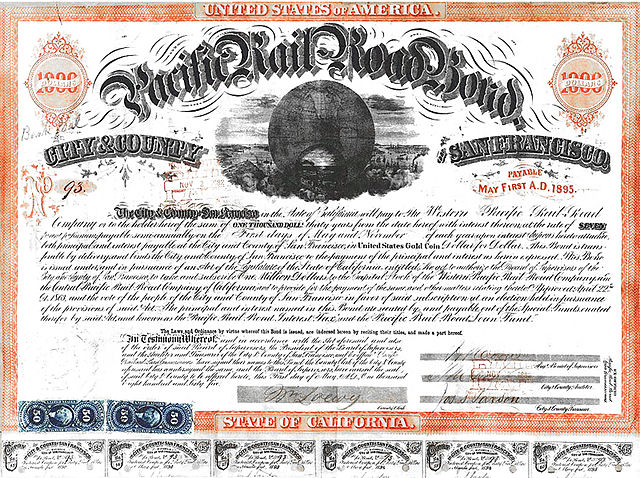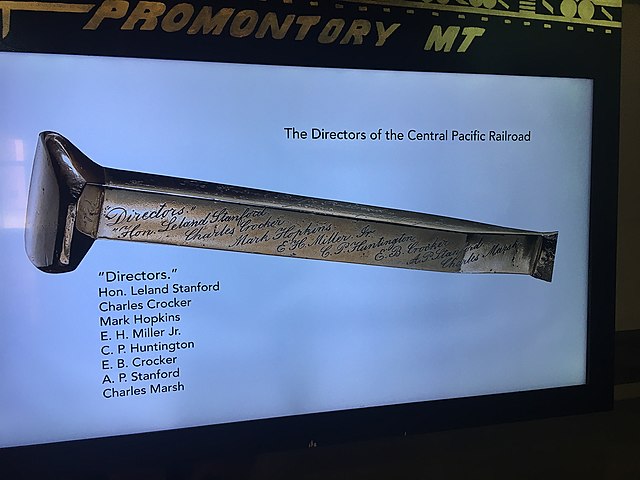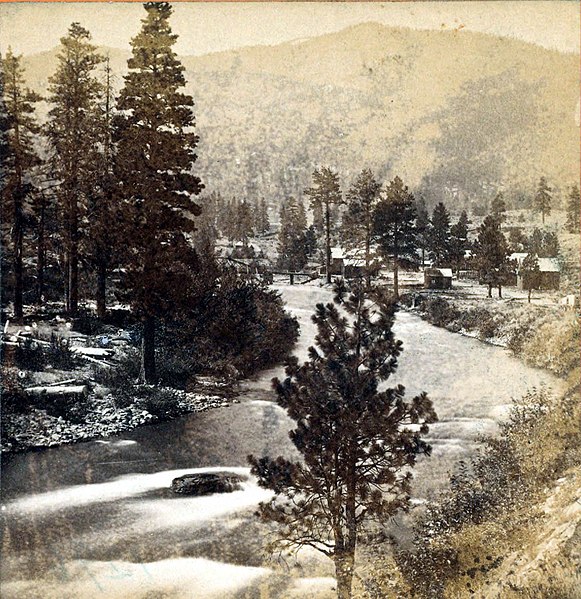Charles Crocker was an American railroad executive who was one of the founders of the Central Pacific Railroad, which constructed the westernmost portion of the first transcontinental railroad, and took control with partners of the Southern Pacific Railroad.
c. 1872 by Stephen W. Shaw
Pacific Railroad Bond, City and County of San Francisco, 1865
The Truckee River at Verdi, Nevada. When the Central Pacific Railroad reached the site in 1868, Charles Crocker pulled a slip of paper from a hat and read the name of Giuseppe Verdi ; so, the town was named after the Italian opera composer.
Charles Crocker's Second Empire-Italian Villa style mansion (1877), formerly at the N.W. corner of California & Taylor, on Nob Hill, San Francisco, now the site of Grace Cathedral.
The Central Pacific Railroad (CPRR) was a rail company chartered by U.S. Congress in 1862 to build a railroad eastwards from Sacramento, California, to complete most of the western part of the "First transcontinental railroad" in North America. Incorporated in 1861, CPRR ceased independent operations in 1875 when the railroad was leased to the Southern Pacific Railroad. Its assets were formally merged into Southern Pacific in 1959.
Gold Spike at the California State Railroad Museum, Sacramento, California. The museum also has a wall-sized painting of the Gold Spike ceremony which includes images of Charles Marsh and Leland Stanford (who were the only two Central Pacific directors to attend the Gold Spike ceremony at Promontory Summit, Utah).
The Truckee River at Verdi, Nevada, c. 1868–75. When the Central Pacific Railroad reached its site in 1868, Charles Crocker pulled a slip of paper from a hat and read the name of Giuseppe Verdi; so, the town was named after the Italian opera composer.
Advertisement for CPRR First Mortgage Bonds (1867)
CPRR #113 Falcon, a Danforth 4-4-0, at Argenta, Nevada, March 1, 1869 (photo: J.B. Silvis)








